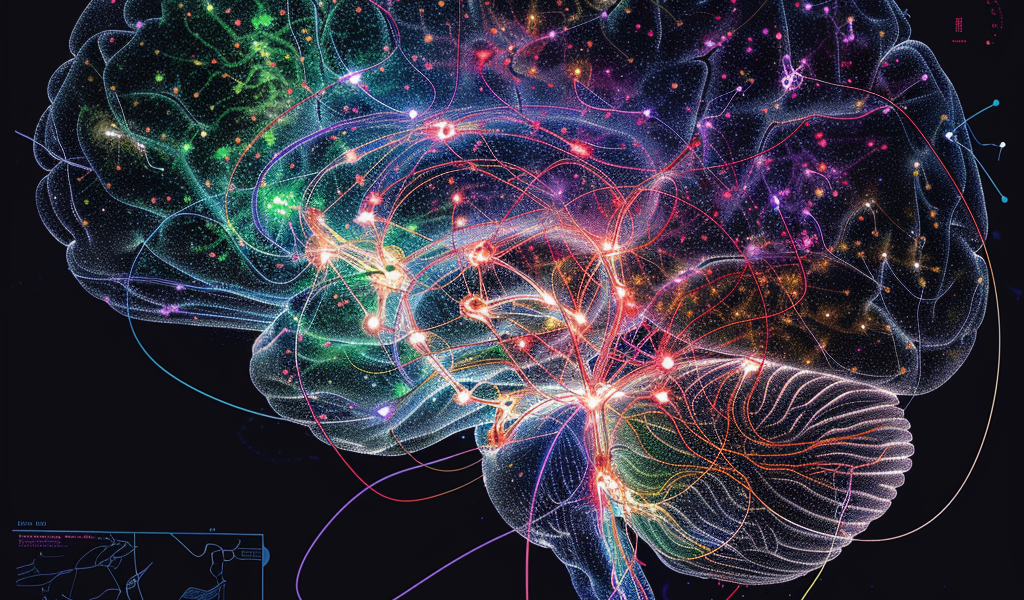Scientists at the Salk Institute have introduced a groundbreaking neurotechnology called Single Transcriptome Assisted Rabies Tracing (START), which promises to revolutionize our understanding of the brain’s intricate neuronal connections. This innovative tool merges two state-of-the-art techniques: monosynaptic rabies virus tracing and single-cell transcriptomics. By employing this advanced methodology, researchers are now able to map the brain’s neuronal networks with unprecedented precision.
The primary focus of the START tool is to provide a detailed mapping of specific neuronal subtypes, particularly inhibitory neurons, within the cerebral cortex. This represents a significant advancement in neuroscience, as it allows for the identification of distinct connectivity patterns among these neurons. The implications of this research are profound, especially for the development of targeted treatments for neurological conditions such as autism and schizophrenia.
According to the researchers, understanding the connectivity of these neuronal subtypes is crucial for the development of novel therapeutics that can specifically target certain neurons and their associated circuits. This specificity could lead to treatments that are not only more effective but also produce fewer side effects compared to traditional pharmacological approaches.
The study detailing the START tool was published on September 30, 2024, in the journal Neuron. It marks a pioneering effort in resolving cortical connectivity at the resolution of transcriptomic cell types, which has never been achieved before. Senior author Edward Callaway, a professor and the Vincent J. Coates Chair in Molecular Neurobiology at Salk, emphasized the importance of this research by comparing the brain to a complex machine.
“When it comes to treating neurological and neuropsychiatric disorders, we’ve essentially been trying to fix a machine without fully understanding its parts,” Callaway explained. He likened the process to attempting to repair a car without knowing the functions of its engine or axle. With the START tool, researchers are creating a detailed blueprint of the brain’s many components and their connections, akin to having a diagram of a car that helps identify how all the parts work together.
This newfound understanding of brain microcircuits opens up exciting possibilities for therapeutic development. By pinpointing specific neuronal subtypes and their roles within the cerebral cortex, scientists can tailor interventions that are more aligned with the underlying biology of neurological disorders.
Inhibitory neurons play a critical role in regulating neural circuits, and their dysfunction is implicated in various neuropsychiatric conditions. The ability to map these neurons with such detail allows for a deeper investigation into their contributions to brain function and dysfunction.
The START tool not only enhances our understanding of the brain’s architecture but also paves the way for future research aimed at elucidating the complex interactions between different neuronal types. This could lead to breakthroughs in how we approach the treatment of disorders that currently lack effective therapies.
As researchers continue to explore the capabilities of START, the potential for discovering new therapeutic targets grows exponentially. The precision with which this tool operates promises to refine our approaches to treatment, moving away from one-size-fits-all solutions to more individualized strategies that consider the unique neuronal landscape of each patient.
The findings from this research underscore the importance of interdisciplinary approaches in neuroscience, where combining different methodologies can yield richer insights into the complexities of the brain. The integration of transcriptomics with viral tracing exemplifies how innovative techniques can transform our understanding of neuronal connectivity.
Overall, the development of the START tool represents a significant milestone in neuroscience. By mapping the connections of specific neuronal subtypes, researchers are not only advancing our knowledge of brain circuitry but also laying the groundwork for more effective and targeted treatments for a range of neurological and psychiatric disorders.
This research is set to inspire further studies that will delve deeper into the implications of neuronal connectivity and its relationship with behavior and cognition. As the scientific community continues to unravel the complexities of the brain, tools like START will be invaluable in shaping the future of neurotherapeutics.





